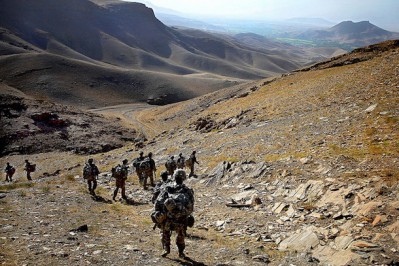CENTRAL ASIA. In the latest decades, Afghanistan has become perceived as a source of terrorist and criminal threats to the former Soviet Union Central Asian state. The terrorist threat may seem to be particularly relevant to Central Asia because the Afghan insurgents and armed opposition have many former Soviet Union representatives in their ranks. Therefore, there are opinions that in case of a deterioration of the situation and the spillover of hostilities from the South of Afghanistan to the North, these groups can become a direct threat to the Central Asian region.
In this respect, the withdrawal of NATO troops from Afghanistan by the end of this year, is argued by some local and international experts to represent an excellent opportunity for the Central Asian militants currently fighting in northern Afghanistan to attempt to reinsert themselves into their countries of origin, funding their military operations by engaging into drug trafficking. As a proof, experts point out the involvement of Central Asian militants in 2013 Taliban offensives in provinces of Afghanistan adjacent to Tajikistan and Turkmenistan.
The post-Soviet Islamist formations began to penetrate Afghanistan in late 90s, after the civil war in Tajikistan, when the part of Islamist militants from Tajikistan and Uzbekistan refused to accept peace agreement in Tajikistan and the political regime in Uzbekistan chose to flee to Afghanistan to join the Taliban and other militant factions. At the beginning, they were united under the Islamic Movement of Uzbekistan, which included, not only militants from Uzbekistan but from other Central Asian states. The movement later broke away and such associations as Islamic Jihad Union and “Jamaat Ansarullah” among other were formed.
At the present moment, these organizations are embedded in the structure of the armed opposition in Afghanistan and are largely controlled by Taliban and al-Qaeda leaders. Their main function is to integrate foreign jihadists who came to Afghanistan to the conditions of the local conflict, and cultural and linguistic environment.
It is obvious that the post-Soviet Islamist militant groups in Afghanistan represent a major threat to the local authorities, rather than to the neighboring states. However, in case of destabilization of the situation in Afghanistan in 2014, the situation may worsen. The possibility of attempts to create military bases in the northern provinces of Afghanistan, establishing contacts with Islamic extremists living in Central Asian countries to prepare joint large-scale attacks cannot be an exception. The most likely targets in the region can become Badakhshan and the Fergana Valley, which have always experienced a high level of political instability.
However, a deliberate look at independent Central Asian states downgrades the exaggerated threat of “invasion” by Islamist militant factions. Though it may seem to be not trustworthy, the discourse of “Islamic” threat benefits authorities of Central Asian states as it perfectly fits their political purposes to perpetuate at power as much as possible.
In Central Asia, both the elites and the ordinary population have a quite different technical and social culture and mentality in comparison to Afghanistan due to the secularism inherited from the Soviet times. Central Asian authorities stick to the strong secularism even after gaining the independence. Though they promote Islamic practice and values in everyday life in order to contain radicalism, but even so there are certain groups that do not recognized this imposed by government Islam. However, moderate Islam attracts most support among Central Asian population.
Furthermore, organized attempts to transfer “holy” war from Afghanistan to Central Asia are not taken since most of the forces of religious extremists are focused on the fight against the forces of Kabul and the international forces. Thus, the possible attacks against neighboring countries can only complicate the situation for the militants. At the same time, several penetrations of small militant aimed groups to sabotage in Tajikistan and Uzbekistan have been successfully suppressed by the authorities, which may be considered unquestionable merit of National Intelligence Services.
Therefore, the return of militant Islamic groups to Central Asia after the NATO forces depart the region is a fiction aimed to fulfill the political purposes of Central Asian authorities that appeal to the threat of radical Islamism to maintain wielding the leverages of power. In other words, the myth of radical Islamism simply serves to ensure international acquiescence for the regional elites.

